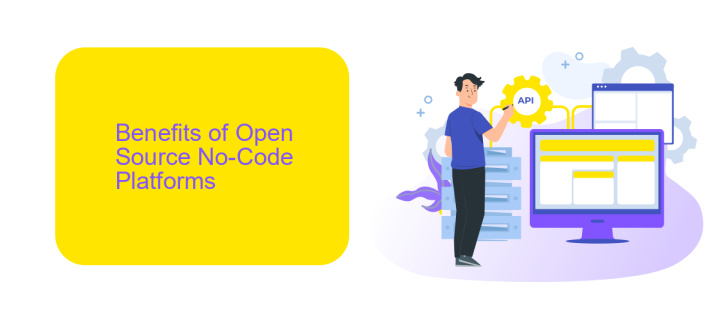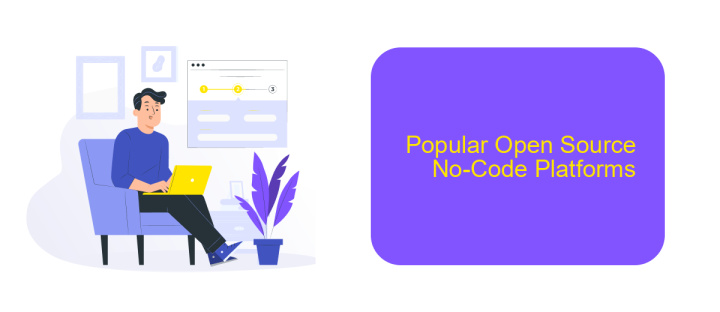No-Code App Development Open Source
No-code app development has revolutionized the way we create software, making it accessible to individuals without traditional programming skills. Open-source no-code platforms take this a step further, offering a collaborative and transparent environment for innovation. This article explores the benefits and opportunities of using open-source no-code tools, providing insights into how they are transforming the tech landscape.
Introduction
The rise of no-code app development has revolutionized the way individuals and businesses create software. By eliminating the need for traditional coding skills, no-code platforms empower users to build functional applications through visual interfaces and pre-built components. Open-source no-code tools further enhance this flexibility by allowing developers to customize and extend functionalities to meet specific needs.
- Accessibility for non-developers
- Rapid prototyping and deployment
- Cost-effective development process
One of the key advantages of no-code platforms is the ease of integrating various services. Tools like ApiX-Drive facilitate seamless integration by enabling users to connect different applications without writing a single line of code. This capability is particularly valuable for businesses looking to automate workflows and improve efficiency. As the no-code movement continues to grow, open-source solutions are playing a crucial role in democratizing app development.
Benefits of Open Source No-Code Platforms

Open source no-code platforms offer numerous benefits, making them an attractive choice for developers and businesses alike. One significant advantage is cost-effectiveness; these platforms eliminate the need for expensive software licenses and reduce development costs. Additionally, they foster a collaborative environment where developers can contribute to and improve the platform, ensuring continuous innovation and rapid problem-solving. This open-source nature also provides transparency, allowing users to inspect and modify the source code to suit their specific needs, thereby enhancing customization and flexibility.
Another major benefit is the ease of integration with various services and tools. For instance, platforms like ApiX-Drive can seamlessly connect different applications, automating workflows without the need for complex coding. This capability not only saves time but also minimizes errors associated with manual processes. Furthermore, open-source no-code platforms often have vibrant communities that offer support, share best practices, and develop plugins that extend the platform’s functionality. This communal support system ensures that users have access to a wealth of resources, making the development process more efficient and less daunting.
Challenges of Using Open Source No-Code Platforms

While open source no-code platforms offer numerous benefits, they also come with their own set of challenges that users must navigate. These challenges can range from technical limitations to community support issues.
- Limited Customization: Despite the flexibility of no-code platforms, they often have constraints that limit extensive customization, making it difficult for users to create highly specialized applications.
- Integration Complexities: Integrating various third-party services can be cumbersome. Tools like ApiX-Drive can help facilitate these integrations, but users may still encounter compatibility issues and require technical know-how.
- Security Concerns: Open source platforms can be more vulnerable to security threats if not properly maintained. Ensuring regular updates and patches is crucial to mitigate these risks.
- Community and Support: While open source projects often have active communities, the level of support can vary. Users may find it challenging to get timely assistance for more complex issues.
Despite these challenges, the benefits of open source no-code platforms can outweigh the drawbacks for many users. By leveraging tools like ApiX-Drive for integrations and staying vigilant about security, users can effectively manage these challenges and build robust applications.
Popular Open Source No-Code Platforms

No-code development platforms have revolutionized the way individuals and businesses create software. These platforms allow users to build applications without writing a single line of code, making technology accessible to everyone, regardless of technical expertise.
Among the many no-code platforms available, several open-source options stand out for their flexibility, community support, and cost-effectiveness. Open-source platforms provide the added benefit of customization and transparency, as users can modify the source code to suit their specific needs.
- Budibase: An open-source platform for building internal tools and applications quickly and efficiently.
- Appsmith: A low-code platform that allows developers to create custom applications with ease.
- Joget: An enterprise application platform that combines no-code and low-code capabilities.
- ApiX-Drive: A service that facilitates seamless integration between various applications, enhancing the functionality of no-code platforms.
These platforms empower users to create functional and scalable applications without needing to invest heavily in development resources. Whether you are a small business owner or a tech enthusiast, these open-source no-code platforms provide the tools you need to bring your ideas to life efficiently and cost-effectively.
- Automate the work of an online store or landing
- Empower through integration
- Don't spend money on programmers and integrators
- Save time by automating routine tasks
Conclusion
No-code app development has revolutionized the way we approach software creation, making it accessible to a broader audience. Open source platforms in this space further democratize development by allowing users to customize and extend the functionalities of their applications without the need for extensive coding knowledge. This empowers businesses and individuals to innovate rapidly and cost-effectively.
Moreover, the integration capabilities offered by services like ApiX-Drive enhance the utility of no-code platforms. By enabling seamless connections between various applications and services, ApiX-Drive simplifies complex workflows and automates repetitive tasks, thereby boosting productivity. As the no-code movement continues to grow, the combination of open source flexibility and robust integration solutions will undoubtedly drive even greater advancements in app development.
FAQ
What is No-Code App Development?
What are the benefits of using No-Code platforms?
Can No-Code platforms handle complex integrations?
Are No-Code apps scalable?
Is No-Code suitable for all types of applications?
Do you want to achieve your goals in business, career and life faster and better? Do it with ApiX-Drive – a tool that will remove a significant part of the routine from workflows and free up additional time to achieve your goals. Test the capabilities of Apix-Drive for free – see for yourself the effectiveness of the tool.


